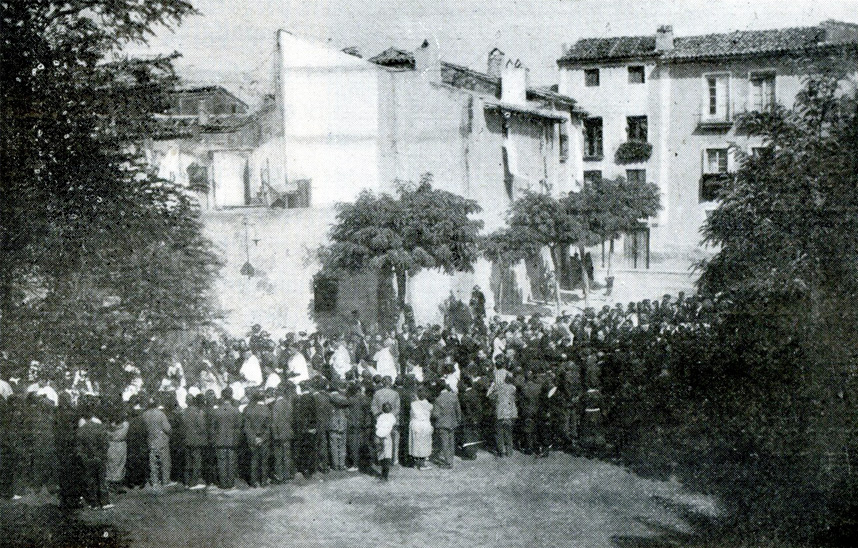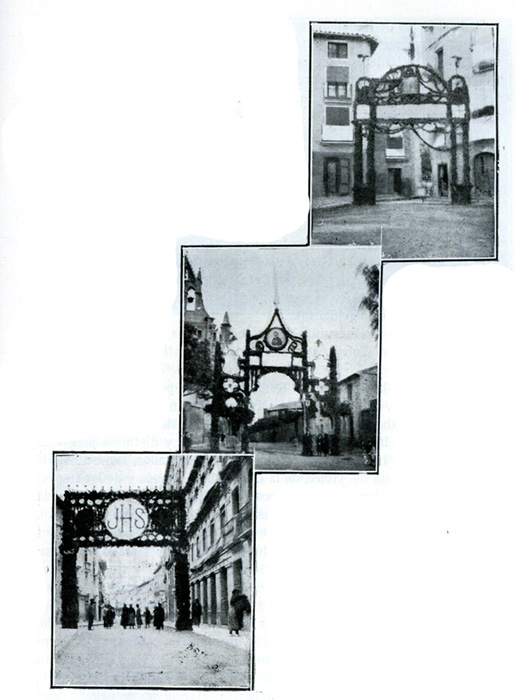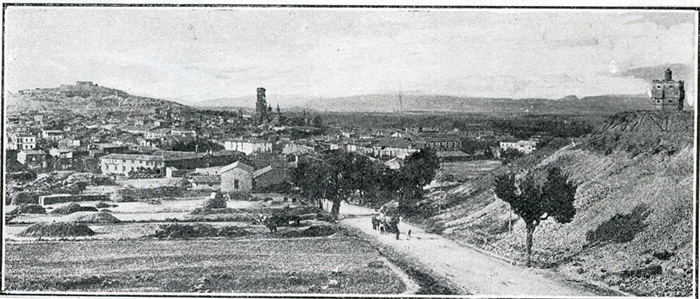Images in Navarra of the III Centenary of the canonization of Xavier (VI)

Tudela
The celebrations of the III centenary of the canonization of the co-patron saint of Navarre took on a special solemnity in Tudela. It could not be less, the city had a long history of Xavierism. In the 17th century, plenary session of the Executive Council it was one of the strongholds of the Xavierists, together with the Kingdom, against the Ferminists supported by the city of Pamplona and the clergy of its bishopric. The text of the vow that the municipal authorities made in 1626 has been preserved and the temples of the city conserve different images and canvases of the co-patron saint, in addition to his reliquary in the cathedral, which keeps the relic of the saint brought in 1662 from Rome, at the request of the civil and ecclesiastical authorities. The presence of the high school of the Jesuits in the Ancien Régime left ample traces in the city, from all over subject, in particular in the egregious members of the high school.
By 1922, the new high school - this time under the board of trustees of St. Francis Xavier - had already had its decades of projection and, undoubtedly, was a spur in all the celebrations of the III Centenary of the canonization of the Navarrese saint.
El Pensamiento Navarro published the manifesto that was made by the board of the Centenary for the visit to the capital of the Ribera, from which we extract the following: "TUDELANOS! The board organizer of the celebrations that are prepared to receive with dignity the venerable relics of the most illustrious son of Navarre, the great St. Francis Xavier, Apostle of the Indies and enlightened Patron of our ancient Kingdom, addresses itself today to you, dear fellow citizens,and in you to all the people of Navarre,and in you to all the Navarrese that integrate the merindad of Tudela, to awaken in you the noble enthusiasms and deep-rooted feelings of religiosity and patriotism that distinguish and characterize you before the peoples and nations of the whole world ....".
Before arriving in Tudela, at six o'clock in the afternoon, a stop was made in Valtierra, where arches had been erected, and the Christ and the Reliquary Arm were received to the sounds of the Royal March to be transferred for a while to the parish church for their veneration.

Arches of the processional degree program corresponding to the Luises, Adoración Nocturna and City Hall. Photo from the Centenary Chronicle
The procession arrived in Tudela between eight and nine o'clock in the evening of October 5, being received by a large crowd, civil and religious authorities, religious communities of the city and Corella and Monteagudo and loud rockets accompanied by peals of bells from the various temples. The correspondent of Diario de Navarra indicates that "When arriving at the bridge of the Ebro, the egregious car of the Most Excellent Deputation, carrier of the treasure of Navarre, which the people of Tudela longed to adore, moved forward in the order of the line; the enthusiasm at that moment was indescribable: shouts, applauses, cheers and illuminations were lit without interruption, the whole city occupied the bridge, the embankments and the road to Pamplona. At entrance the relics were awaited by His Excellency the Bishop of Tarazona, the Town Council in corporation, the Cathedral Chapter, the Member of Parliament Mr. Méndez de Vigo, the provincial deputies Mr. Guelbenzu and Mr. Baleztena and other authorities and active forces of the city".

Arches of the processional degree program corresponding to the Apostleship of Prayer, the Daughters of Mary and the Third Order. Photo from the Centenary Chronicle
The chronicler of the Company gives the figure of twelve thousand people applauding and cheering. Among the most striking of those conference were the arches erected in different parts of the city by associations such as the Luises, the Nocturnal Adoration, the Daughters of Mary, the Apostleship of Prayer or the Third Order. The descriptions of all of them are lengthy. In the place de los Fueros and from the balcony of the main house of the same, Father Victor Elizondo harangued with a spirited speech to those present, moving them to the internship of the sacraments. The procession went through different streets until it reached the cathedral. For the occasion a hymn composed by the organist of the cathedral, Don Tomás Jiménez and lyrics by Father Etulain was premiered.
The pontifical on the 6th was presided over by the diocesan bishop of Tarazona, Bishop Isidro Badía, despite his poor health. Several towns of the region attended with flags and authorities. A procession, led by a cavalry picket, moved the relics from the cathedral to high school, in the middle of streets decorated, in this case with tapestries and also with corn cobs, which formed the Spanish flag, "something not unattractive from afar". The official banquet was served in the Town Hall by the Fonda Remigio. El Pensamiento Navarro published the menu, which began with American-style hors d'oeuvres and ended with coffee, liqueurs and Havana cigars.
The relics also visited the Hospital, the Royal House of Mercy and the cloistered convents. On the morning of the 7th it was the time dedicated to the schoolchildren, and the people of Murchante joined in the pilgrimage. At three o'clock and average was the farewell, giving the blessing from the place de los Fueros, with a new intervention by Father Elizondo, who insisted on the banishment of blasphemy. From Tudela and by the insistence of the deputy of Cascante, Mr. Guelbenzu, the retinue with the relics moved to Cascante, where many people from Murchante and Tulebras had arrived.

View of Tudela in 1922. Photo from the Centennial Chronicle
From La Ribera they returned to Pamplona, on October 8, where the farewell took place in the Diputación, the Carmelitas de Echavacoiz and the cathedral. In this last temple a solemn Te Deum was sung and, at the exit, a company of Infantry rendered military honors to the Holy Arm in the atrium of the cathedral. The trip continued to San Sebastian and Loyola.
LEARN MORE
Diario de Navarra, October 6, 7 and 8, 1922.
EGUÍA RUIZ, C., Reliquias de San Ignacio de Loyola y San Francisco Javier. Su recorrido triunfal por España, Madrid, Blass, S. A. Tipográfica, 1924.
El Pensamiento Navarro, October 4, 7, 8 and 10, 1922.
